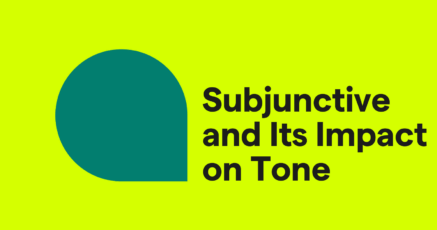Grammar Tips - Page 7
 What Is the Present Perfect Tense? Definition and ExamplesThe present perfect tense is an English verb tense used for past actions that are related to or continue into the present, such...July 25, 2022
What Is the Present Perfect Tense? Definition and ExamplesThe present perfect tense is an English verb tense used for past actions that are related to or continue into the present, such...July 25, 2022 What Are Modifiers? How to Use Them Correctly, With ExamplesModifiers, as their name implies, are words that modify. Specifically, they’re words that modify their sentences’ meanings. How...July 19, 2022
What Are Modifiers? How to Use Them Correctly, With ExamplesModifiers, as their name implies, are words that modify. Specifically, they’re words that modify their sentences’ meanings. How...July 19, 2022 What Is a Participle? Definition and ExamplesKey takeaways: Participles modify nouns as adjectives and help form verb tenses with auxiliary verbs. Present participles...July 5, 2022
What Is a Participle? Definition and ExamplesKey takeaways: Participles modify nouns as adjectives and help form verb tenses with auxiliary verbs. Present participles...July 5, 2022 What Is Subject-Verb Agreement?Subject-verb agreement is the grammatical rule that the verb or verbs in a sentence must match the number, person, and gender of...June 29, 2022
What Is Subject-Verb Agreement?Subject-verb agreement is the grammatical rule that the verb or verbs in a sentence must match the number, person, and gender of...June 29, 2022 What is the Subjunctive? Definition and ExamplesKey takeaways: The subjunctive mood expresses wishes, desires, and imagined scenarios. It functions as a verb mood and often...June 15, 2022
What is the Subjunctive? Definition and ExamplesKey takeaways: The subjunctive mood expresses wishes, desires, and imagined scenarios. It functions as a verb mood and often...June 15, 2022 10 Commonly Misspelled Words, and How to Get Them RightSpelling words correctly can be an underappreciated skill because it’s considered such a basic characteristic of strong writing....June 3, 2022
10 Commonly Misspelled Words, and How to Get Them RightSpelling words correctly can be an underappreciated skill because it’s considered such a basic characteristic of strong writing....June 3, 2022 What Are Infinitives, and How Do You Use Them?Infinitives are a special form of verbs that can be used as a noun, adjective, or adverb. They are usually made by adding the...May 19, 2022
What Are Infinitives, and How Do You Use Them?Infinitives are a special form of verbs that can be used as a noun, adjective, or adverb. They are usually made by adding the...May 19, 2022 What Is Syntax? Learn the Meaning and Rules, With ExamplesKey takeaways: Syntax refers to the particular order in which words and phrases are arranged in a sentence. Small changes in word...May 4, 2022
What Is Syntax? Learn the Meaning and Rules, With ExamplesKey takeaways: Syntax refers to the particular order in which words and phrases are arranged in a sentence. Small changes in word...May 4, 2022 What Is a Gerund? Definition and ExamplesKey takeaways: Gerunds are verbs ending in -ing that act as nouns in a sentence. They take on roles like subject, object, or...April 8, 2022
What Is a Gerund? Definition and ExamplesKey takeaways: Gerunds are verbs ending in -ing that act as nouns in a sentence. They take on roles like subject, object, or...April 8, 2022 To vs. For: What’s the Difference?To and for are some of the most common prepositions in English—you see them everywhere, in almost every sentence. That’s what...March 3, 2022
To vs. For: What’s the Difference?To and for are some of the most common prepositions in English—you see them everywhere, in almost every sentence. That’s what...March 3, 2022